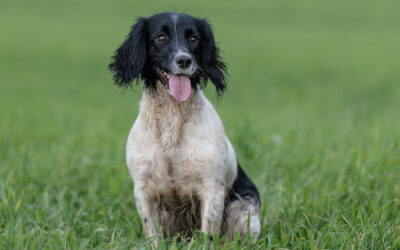Last Updated: 31st July 2022

In essence, a working dog is likely to need a higher than average energy requirement from its food. However, this really is related to how strenuous the work is that they are doing. It is not only the work but also the conditions in which your dog is working that need consideration. Harsh cold weather conditions will result in an increased energy/calorie requirement.
The key in planning ahead for when your dog is going to be working at its hardest, which as well know is unlikely to be all year round. You may need to start introducing a more calorie/energy dense food or increase the quantity of the current diet to meet the dogs increased requirements. Any changes to diet should be done gradually. If you are changing food then begin to do so approximately 2 weeks before the hard work begins so you can slowly swap to the new food from the current diet.
Remember, dogs have a limit on the quantity of food they can physically eat, therefore just increasing the amount of food may not be enough. If you are feeding high quantities of food and the amount of faeces increases, it might be that the dog is unable to digest the quantity of food provided. If this is the case then you will need to look at a more energy rich, easily digestible food.
Always keep a close eye on yours dogs condition as their workload changes. If your dog isn’t getting enough from their food during hard work, then they will lose condition quickly and won’t be working to the best of their ability. Monitoring your dog’s weight and condition score will help determine that you are feeding the right food at the right amount. Ideally you are aiming to keep the dog at a good weight throughout the working period without losing condition or looking too lean.
It is advisable to feed you dog at least an hour before or after strenuous activity especially if your dog is still panting. Feeding too close to activity can cause digestive upset, diarrhoea and/or vomiting. This is also the same for giving water too soon after very strenuous work.
On a working day, try and feed your dog at least twice a day to ensure energy and blood sugar levels don’t drop too low. Clean water should also be available at any rest periods throughout the working day.
The requirements of many working dogs will fluctuate throughout the year, each dog should be treated individually when it comes to their dietary requirements. Our team is always on hand to help and you can contact us here.